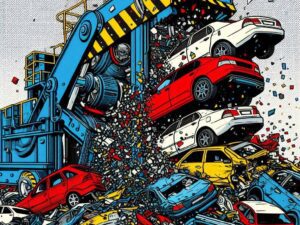The best JDM kei cars
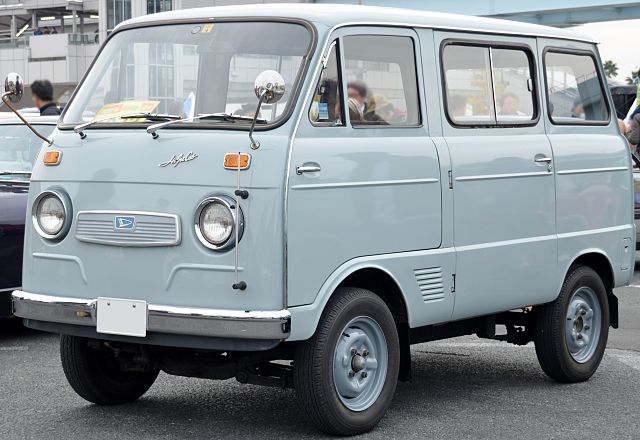
No foray into the madness of JDM car culture could be complete without looking at the small-but-mighty kei car. Keijidōsha (which literally means ‘light vehicle’) is a phenomenon that’s uniquely Japanese.
For the most part these itsy-bitsy, teeny, little cars aren’t the most common sight on the roads outside of Japan. But there’s no denying that their influence has made quite the mark on the global car scene. Keijidōsha is just one of the many styles of Japanese car that has slowly transcended to iconic status. So, let’s take a look at ten of our all-time favourites. But first of all, let’s answer the often-asked question: what exactly is a kei car?
What is a kei car?
It’s easy to assume that – what with many a city in Japan being extremely overcrowded – these miniature autos are solely about ease-of-use and saving space. But, while that’s certainly a string to their bow in the modern era, the concept behind them comes from well over 70 years ago. The first kei cars, which appeared in the late 1940s, were strictly limited to 360cc and designed simply to boost the postwar economy. Most Japanese citizens in this period couldn’t afford anything but a motorbike, but the kei car solved this problem. In fact, the regulations and government tax incentives that came with them were vital in restarting the home-grown auto industry. It could be argued that without the kei car Japan would be a very different place nowadays, with hardly any of the car manufacturers we know and love still in existence.
The keitora tax regulations have changed a little over the years. In 1975, the rules were updated to allow 550cc engines, and the ‘90s brought on the 660cc era – a period between 1990 and 2013 which is seen as something of a golden era for the humble keijidōsha. From then until the present day, government incentives haven’t been nearly as kind to kei car owners, but the tiny 660cc engines and the kei ethos lives on.
With an official 64bhp limit and overall dimensions having to be no more than 3,490mm long and 1,490mm wide, kei car designers have always had to, let’s just say, go all out to make their cars stand out in a segment that’s just as crowded as the cities themselves.
1. Autozam AZ-1 (1992-1994)
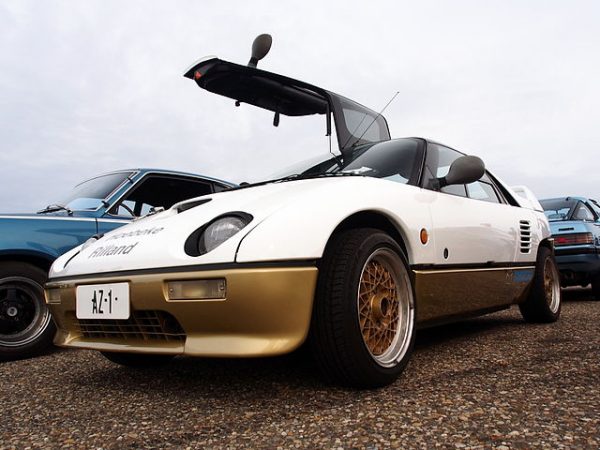
Despite not being all that popular at the time, largely due to the relatively hefty price tag, the Autozam AZ-1 has become something of a poster boy for the early 660cc era. And it’s easy to see why.
Perhaps the ultimate scaled-down supercar, much of the AZ-1 was engineered here in the UK. It was also manufactured by Suzuki, before being sold through Mazda’s Autozam dealer network. And, if that isn’t confusing enough, the simple fact that this car exists in a market all about cheap practical runabouts is pretty confusing, too.

But we guess that none of that actually matters because this pint-sized street weapon is a bona fide motoring icon nowadays. Not only is the AZ-1 packing a turbocharger strapped to the side of its 657cc motor, rear-wheel-drive and an engine mounted right in the middle but, as you can see, it’s got gullwing doors, too. That’s enough for us and suffice to say that this one has never had trouble standing out from the crowd.
Unfortunately though, the AZ-1 came in at a fair few Yen more than the Honda Beat or Suzuki Cappuccino of the day. And, with the recession in Japan in full swing during the early nineties, they didn’t exactly fly out of the dealers. In the end less than 4,500 were ever produced making the AZ-1 a rare beast back then, and significantly rarer now.
2. Subaru Sambar (1961-Present)
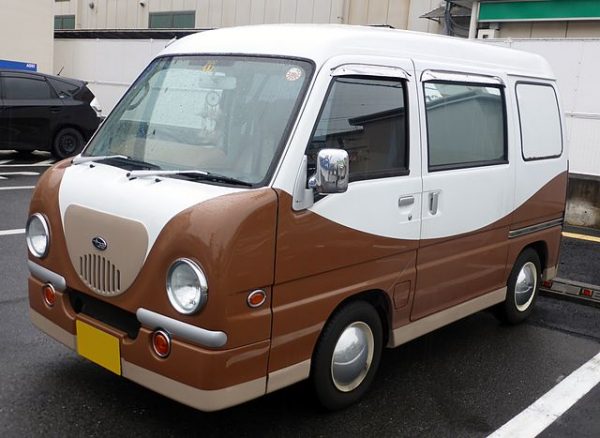
Subaru may be best-known for their fire-breathing rally cars and agricultural estates, but the six-star badge actually has a far more illustrious history when it comes to kei cars. The legendary Sambar microvan is perhaps the ultimate example.
Eight generations have been produced since 1961 and the Sambar pickup has the notable distinction of being the first ‘truck’ to comply with all the keitora tax regulations, making it the very first kei commercial.
But, of course, we’re most interested in the iconic minivan which (apparently) has a retro charm that made it much more popular than you may imagine over the past six decades. Still, even though some later models came with a supercharger to push power to a heady 58hp, the humble Sambar clearly isn’t the maddest or most remarkable machine on our list. Although all this changes when these little vans are modified… which happens a lot.
Perhaps the most iconic Sambar is the fifth-generation microvan. Produced between 1990 and 1999, these have become best-known as the base for various baby VW Camper conversions around the world. It’s actually a simpler transformation to achieve than you might think. You can even buy bolt-on conversion kits to build yourself a campervan for a fraction of the price (and size) of the real deal. Seems like a great idea to us.
3. Honda N-Box (2011-Present)
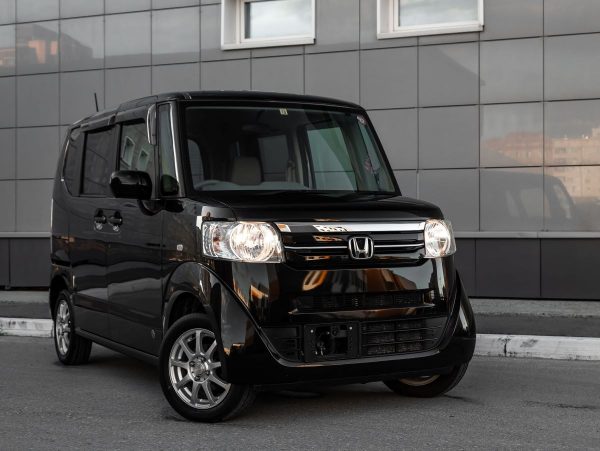
We can’t help but love the absurd look of the Honda N-Box and, with nearly 2 million of them sold since 2011, so, it seems, does everyone else. In fact, this little wagon is still one of the most popular cars in Japan, a common sight in every town and city across the mainland.
The N-Box is exactly what it says on the tin – a box on wheels. But, while this scaled-down people carrier may not be as overtly wild as some of our other kei cars here, there’s no denying that it’s an extremely well-thought-out piece of engineering.
Honda’s idea was to produce a kei car that’s almost impossibly spacious inside and they’ve managed this simply by being clever and maximising the tiny footprint to the ‘nth’ degree. With a Tardis-like, retro style cockpit, two generations to choose from and up to 58hp (or 63hp if you can find a turbocharged version), the N-Box is guaranteed to give anyone a warm fuzzy feeling inside. If you can indeed call a car cute, this has to be up there with the best.
4. Daihatsu Copen (2002-Present)

Who doesn’t love the idea of a miniature drop-top? It’s probably why the Daihatsu Copen has been one of the most successful kei cars ever conceived. Even outside of Japan these are popular, with plenty making their way to the UK over the past two decades. The thing is though, the Copen is one of those examples where it’s both a genuine JDM kei car and it isn’t.
You see, the first-generation Copen came with two engine options. A 64bhp, 659cc turbocharged JDM model that’s classed as a kei car, and the 86bhp, 1.3-litre naturally aspirated variant that we got here in Europe. The latter, strictly speaking, isn’t a kei car at all and, even worse, it’s actually slower than the less-powerful JDM version.
The second-generation Copen, which came along in 2014 and is only offered with a 658cc engine, hasn’t proved quite as popular on our shores as the first, but it’s still quite the capable B-road banger. And a genuine kei car to boot.
What’s most important of course, is that the Copen offers a cheeky little hardtop convertible with endless modifying potential. There’s a bag load of weird and wonderful special editions (all sporting flashy bits and pieces such as BBS wheels and Momo steering wheels) and the legendary Japanese tuner, Liberty Walk, even offers a full aftermarket widebody kit… which is quite the departure from their more customary supercar creations. Yep, there’s definitely a lot to love about the Copen.
5. Honda S660 (2015-2022)

Rather than merely resembling a scaled-down sportscar, the Honda S660 is the real McCoy. The successor to the legendary Beat (and don’t worry, we’ll get to that one), this mid-engine roadster has become infinitely sought after by collectors around the world. Popular among Honda fans for being a little different from the usual Type-R badged Civics, the S660 quickly earned iconic status in the modified car community too. It’s a head turner for sure, but without being quite as gimmicky as most kei cars.
Much of this, of course, is down to the amazing spec. Rather than building a car to be cute or quirky, Honda took the sportscar ethos extremely seriously and equipped the Beat with a manual gearbox, a capable chassis and near-perfect weight distribution. And all in a car that weighs just 800kg. Add that to the fact that the S660 is well-served by the aftermarket, with plenty of the most iconic parts manufacturers falling over themselves to offer upgrades, and it’s clear that what we have here is something special.
Body styling and suspension upgrades are common on cars in the second-hand market and the iconic Japanese manufacturer, HKS, even offers a turbocharger conversion to push the standard 64hp to well over 100. In other words, you just can’t go wrong.
6. Suzuki Wagon R (1993-Present)
Of all the kei cars on our list, the Wagon R is arguably the most familiar with motorists here in the UK. Once again though, all is not as it seems. The Wagon R+ version available here in Europe didn’t come along until 2017 and wasn’t classified as a kei car at all, chiefly because of the 1-litre (and later 1.2 and 1.3-litre) engines crammed into a slightly larger body shell. The Wagon R+ was essentially a Euro rebadging of the Japanese Wagon R-Wide, a car that always exceeded the kei car regulations.
The JDM Wagon R, however, is a true kei car. It comes with the correct dimensions and the 660cc three-cylinder engine you’d expect, but what’s notable is that it’s also been the best-selling kei car in Japan for over two decades. With nearly 10 million hitting the Japanese streets, and over 3 million sold around Asia (with the bulk of them in India), the Wagon R has been one of the biggest success stories for Suzuki.
Then again, the sheer popularity of this car means that it’s now considered normal. So, over all four generations since the 1990s, what gives the Wagon R the right to be on our list of weird and wonderful kei cars? Well, the quirkiness of the first and second-generation models is always a decent talking point. Up until 2003, most JDM Wagon Rs had a four-door layout with two doors on one side and a single door on the other. Sadly, this has evolved into a more conventional five-door layout over the years but, even so, the Wagon R is still going strong.
7. Daihatsu Cuore Avanzato (1994-1998)
The Daihatsu Mira range was introduced over 40 years ago, way back in 1980. But don’t worry if you’ve never heard of this model because the Mira has also been badged as the Cuore, Charade, Domino and the Handivan. We’re sure Daihatsu had a good reason for all this – we’re just not sure what it was.
The JDM version had a 660cc engine and there were a few other distinctly ‘non-kei’ options available for the rest of the world. Most importantly though, these saw plenty of success and remained in production right up to March 2018. It’s not a bad run by anyone’s standards, even though the vast majority were rather plain, boring little cars. Functional is the word of the day here… except for the Cuore Avanzato TR-XX.
This little street rocket came along in 2014 and was built on the new L500 series platform, the first to allow Daihatsu kei cars to come with four-cylinder engines. Even so, we still can’t help thinking that the Avanzato TR-XX was the result of the engineers being allowed to go a little wild on the spec. First up they turbocharged the 16-valve, twin cam. Then they threw on an intercooler and made it rev to just over 8500rpm. And then – presumably to make sure that all 64-horses were being used to good effect – they equipped the chassis with four-wheel drive. And yes, we say 64bhp but most experts agree that there’s quite a bit more under that miniature-sized bonnet. Like many Japanese cars of the era, the official figures are a little conservative to say the least.
The best thing about the Avanzato TR-XX is that there’s no good reason why this kei car should even exist at all. There’s none of the usual 100mpg claims that make a kei car a kei car, and it’s not what you’d call a simple everyday runabout, either. But, then again, that just makes us love this one even more.
8. Honda Beat (1991-1996)
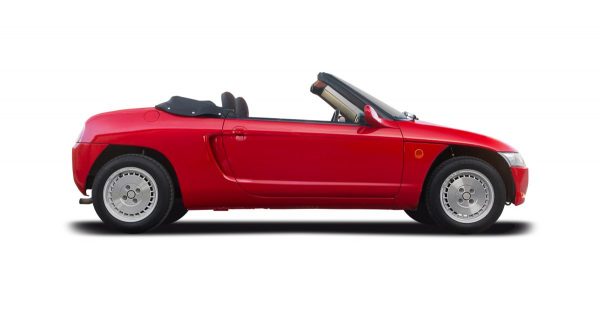
The Beat may have only been around for five years but its legacy is strong… and not just because it eventually spawned the insanely good Honda S660.
This little rear-wheel-drive roadster also came along nearly a decade before the legendary Honda S2000, and the Beat has the distinction of being the last car to be officially signed off by Soichiro Honda himself, just before he died in 1991.
The mid-engine layout is important, as is the rather epic handling and the fact that it only came with a manual gearbox. But what we love most is the Honda VTEC-like approach to laying down the horsepower. You may have only got 63bhp from a naturally aspirated engine here, but the engineers were adamant about building a proper sportscar without resorting to forced induction. Instead – as seems to be customary with sporty Hondas – there’s no turbocharger and the peak power comes right at the top of the rev range. It kicks in at 8100rpm in fact, when most other cars (and not just kei cars) have long run out of puff and changed up a notch.
All this was down to the rather clever 656cc Multi Throttle Responsive Engine Control (MTREC) lump which came equipped with an independent throttle body for each of the three cylinders. What the Beat lacks in size then, it more than makes up for in ingenuity.
9. Daihatsu Hijet (1960-Present)
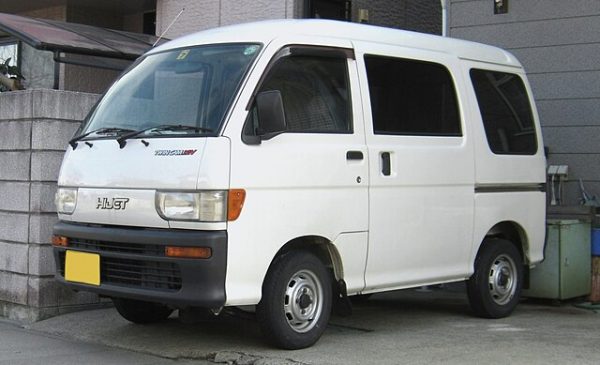
Landing in 1960 and evolving through eleven generations, the Daihatsu Hijet is one of the oldest kei car nameplates that’s still in production… even if the past few generations have essentially been re-badged Subaru Sambars.
The Hijet is arguably the most successful commercial kei truck of them all, with countless different configurations and trim levels hitting the streets over the past 60-years. Pickups, panel vans, microvans – the interchangeable chassis format and mid-engine layout has proved infinitely popular, and many have described the Hijet as the archetypal kei car. The one they think of above any other.

With so many versions to choose from we had a little trouble picking out our favourite but, at a push, we’d say it’s the Hijet Climber Pickup with its four-wheel-drive, chunky tyres and hardcore diff lock. This is quite possibly the toughest 660cc off-road mud plugger ever conceived, and more than enough to keep up with the big boys.
10. Suzuki Alto Turbo RS (2014-2018)

It’s unfortunate, but the Suzuki Alto is a largely forgettable car. This tiny hatchback has been around since 1979 and, although it’s still in production to this day, it always conjures up all sorts of images of Grandmama’s shopping trolley holding up everyone else in the middle lane.
There are a few exceptions though: the ‘Works’ models built for competition in the ‘80s and ‘90s were quirky little road-going racers, and these have become some of the most sought-after by even the most respectable kei car collectors. But with that said, we think the best of the bunch has to be the eighth generation Suzuki Alto Turbo RS.
Not only does this one look like one of the angriest little cars of all time, scowling like some sort of kei car pit bull terrier with little man syndrome, but the miniature menace actually came with a decent spec, even by ‘big car’ standards. 17-inch wheels on a kei car is something of a laughable concept in itself but, according to all reports, the handling, power delivery and equipment is much better than you’d ever expect too. And we just love the fact that they also made an all-wheel-drive version.
Insurance for your JDM import
Whether you’ve chosen a JDM kei car or performance car, we can help you get the right JDM imported car insurance based on your needs. If you’ve gone through the process of importing a vehicle, we know you’ll treat it with the care and attention it deserves. Call us on 0800 369 8590 for a quote.


